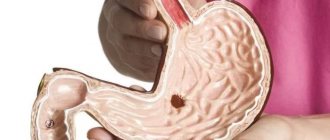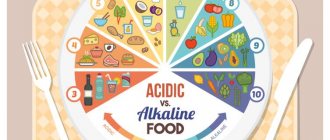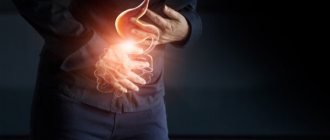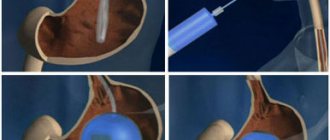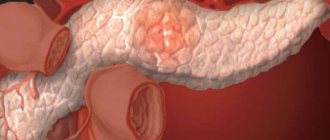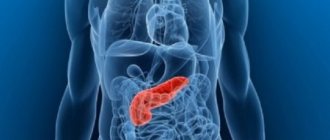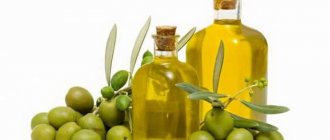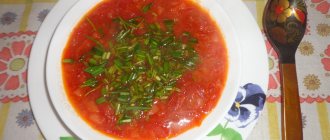Due to modern active life, gastritis has recently been on the list of common diseases. Non-atrophic gastritis is recognized as its most common form. Let's take a closer look at what it is.
Common form of gastritis
Non-atrophic gastritis is a disease that causes chronic inflammation of the surface layer of the gastric mucosa. The activity of the gastric glands is preserved. The main characteristics include: an increase in the secreted hydrochloric acid, there is no decrease in immunity, inflammation of the stomach walls, the age of the patients is 40 years or more.
Causes and course of the disease
The main causes of non-atrophic gastritis are:
- Alcohol abuse and smoking.
- Chemical and radioactive effects on the body.
- Parasites.
- Numerous and uncontrolled use of medications.
- Consequences of surgical intervention.
- Genetic predisposition.
Gastroenterologists say the most common cause is the entry into the body of a bacterium called Helicobacter pylori, which was discovered in 1983 by Australian researchers J. Warren and B. Marshall. The percentage of occurrence of the disease in this case is 85-90.
After the introduction of the bacterium into the body and upon its contact with the epithelium, damage to the epithelial cells is observed. During the inflammatory process, cells are activated, which causes their secondary damage. As a result, the production of hydrochloric acid increases, as a result of which the process of cellular regeneration is sharply reduced. The acidity of the stomach is either increased or decreased. When it decreases, the bacterium moves to the area of the bottom and body of the organ. If the acidity is increased - into the duodenum.
What is it - non-atrophic gastritis
Non-atrophic (superficial) gastritis is the most common pathology of the gastrointestinal tract. In most cases, it affects mature people over 40 years of age and is detected equally in both men and women. The disease is also diagnosed in children, mainly of school age. Symptoms and treatment depend on the form of the disease and the degree of development of the inflammatory process.
Primary inflammation occurs more often when the bacterium Helicobacter pylori enters the stomach or when exposed to other aggressive irritants. If left untreated, the inflammatory process becomes chronic with typical periods of exacerbations and remissions. The advanced disease progresses and affects the deeper layers of the walls of the stomach and the glands that produce hydrochloric acid.
When the bacterium Helicobacter pylori enters and comes into contact with the epithelial tissues of the stomach, the epithelial cells are damaged. The inflammatory process activates cells, which provokes secondary damage. This causes an increase in the production of hydrochloric acid, which disrupts cell regeneration processes. The acidity level of gastric juice may be increased or decreased. When acidity is low, the bacterium is located in the body or at the bottom of the stomach; when acidity is high, it moves closer to the duodenum.
Common symptoms of the disease
Non-atrophic gastritis is known for the initial stage of disruption of the gastric mucosa, and therefore does not have severe symptoms. It is worth considering general disorders and local symptoms.
Common disorders include:
- Increased fatigue and weakness.
- Emotional irritability.
- Arrhythmia.
- Decreased vitality.
- Constant sleepiness.
- Burning and discomfort in the mouth.
Local disorders include:
- Constipation or, on the contrary, diarrhea.
- Bloating, gas, rumbling.
- Aching abdominal pain, cramps.
- Nausea, sometimes vomiting.
- Heartburn and “sour” belching.
- Feeling of heaviness after eating.
- Decreased appetite.
In case of exacerbation of gastritis, the following is observed:
- Constant or spasmodic pain in the abdomen, aggravated by fasting or, conversely, after eating.
- Nausea, morning vomiting, heartburn.
- Burning sensation in the chest, discomfort in the mouth, belching.
- Thirst.
- Constipation or diarrhea.
- Headache, rapid heartbeat.
Sometimes the symptoms are accompanied by vomiting blood, which indicates gastric bleeding. In this case, the feces become black.
If these symptoms appear, the patient should not postpone visiting a gastroenterologist and self-medicate; a deterioration in general health and development of the disease may occur.
Symptoms
The initial stage of the disease may occur without any symptoms. Chronic antrum gastritis is accompanied by an increase in acidity levels. Excess secretion causes heartburn and sour belching. These signs accompany any form of antrum gastritis. Symptoms of exacerbation:
- an attack of pain in the epigastric zone after eating or on an empty stomach, which lasts 1–3 hours;
- sour taste in the mouth;
- nausea;
- belching;
- continuous vomiting;
- increased gas formation;
- bowel disorders;
- lack of appetite;
- general weakness due to intoxication.
The acute phase of the disease is often confused with poisoning. During the period of remission, moderate pain may occur while eating, which quickly passes.
Difficulty in digestion caused by chronic gastritis is called functional dyspepsia by experts. And also this term indicates the presence of changes in the structure of the gastric mucosa.
Species classification
Gastroenterologists distinguish three main types of non-atrophic gastritis.
- Chronic non-atrophic gastritis is caused by the penetration of the bacterium Helicobacter pylori and the presence of inflammation of the gastric mucosa.
- Focal nonatrophic gastritis differs from the previous type in that the inflammation is localized and only individual areas are damaged, and not the entire surface of the mucosa.
- Non-atrophic antral gastritis - during it, only the lower part of the stomach is affected, passing into the duodenum.
Types of non-atrophic gastritis
Non-atrophic gastritis is divided into several types according to the localization of the inflammatory process:
- fundamental. The rarest type of pathology in which inflammation affects the bottom region of the stomach;
- antral. The most common type of disease. The pathological process is localized in the antrum, the lower part of the organ bordering the duodenum;
- body of the stomach. The middle part of the organ is affected;
- pangastritis. Inflammation affects the entire surface of the mucous tissues of the stomach.
In addition, there are types of this pathology, distinguished by the characteristics of the manifestation of the inflammatory process:
- Diffuse gastritis. The entire mucous layer of the stomach is affected.
- Focal gastritis. The safest type of pathology. The inflammatory process develops in foci in certain areas of mucous tissue, mainly in the columnar epithelial tissues of the stomach.
- Chronic non-atrophic gastritis. The main causative agent of the pathology is the bacterium Helicobacter pylori. This form of the disease is characterized by the absence of cell regenerative functions.
Medical diagnosis of disease
In gastroenterology, the diagnosis of the disease is made using laboratory tests and collecting the patient's medical history. The main tests here are the study of gastric secretion and the identification of the bacterium Helicobacter pylori, the main cause of the disease.
Laboratory methods include:
- BAC analysis or biochemical blood test - allows you to see the initial signs of inflammation in the body.
- Analysis of urine and feces - due to decreased secretion of the stomach, it is possible to detect undigested food debris or blood.
- Fibrogastroduodenoscopy (FGDS) - a procedure is performed by inserting a flexible fiber endoscope into the esophagus and stomach, allowing one to assess the condition of the esophagus, stomach and duodenum. When the disease occurs, the mucous membrane is shiny, edematous, with slight hemorrhages.
- Intragastric pH-metry, showing the functioning of the secretory function.
- Ultrasound examination of organs: pancreas, liver and gallbladder - to identify diseases and damage to the gastrointestinal tract.
Drug therapy for the disease
Depending on the type of non-atrophic gastritis and its course, the gastroenterologist recommends treatment with a complex drug method.
- Treatment of gastritis caused by Helicobacter pylori consists of antimicrobial therapy, including:
- antibiotics;
- proton pump inhibitors, necessary for the treatment of the gastrointestinal tract, due to increased secretion of hydrochloric acid;
- preparations containing bismuth, which form a protective film on the mucous membrane, which protects the mucous membrane from aggressive factors. These include: de-nol, ventrisol.
- Treatment of gastritis caused by other causes includes:
- drugs to reduce stomach acidity, such as: almagel, phosphalugel, maalox;
- drugs to protect the gastric mucosa: bismuth dicitrate, sucralfate;
- preparations for healing damaged stomach tissue: folic acid, nicotinic acid 1%;
- antispasmodics.
Treatment of the disease is accompanied by a specialized diet, which differs depending on the level of stomach acidity.
In case of increased acidity, the main goal of which is to reduce the level of acidity, the patient is recommended to:
- Reduce or completely eliminate foods containing coarse fiber. These products include: bran bread, raw vegetables, radishes, stringy meat.
- Avoid foods that cause increased gastric secretion: alcoholic and carbonated drinks, sour fruits, white cabbage, black bread.
- Be careful when eating foods that are too hot or too cold.
- It is recommended to eat fish, boiled vegetables and meat, and jelly.
With low acidity, it is recommended to reduce inflammation using a special diet:
- It is allowed to eat chicken meat, fermented milk products, onions, garlic, sour fruits and berries.
- Exclude from the diet fatty foods, smoked foods, milk and foods containing coarse fiber.
Treatment
Forms of non-atrophic gastritis have similar general symptoms and treatment is prescribed according to the specific type of disease. Focal inflammations are most susceptible to successful and rapid restorative therapy. Chronic diffuse pathologies require more time to heal. The patient is prescribed complex therapy, including diet, medications, vitamins and folk remedies.
Diet
If inflammatory processes occur in the stomach, it is worth completely reviewing your entire diet. For non-atrophic gastritis, gastroenterologists have formulated therapeutic diet number 5. The acute form requires compliance with very strict instructions. For it and the erosive form, therapeutic nutrition No. 1 is prescribed. It involves complete fasting for the first two days, the only allowed foods are crackers, still water, and weak tea.
Next, the meal is diluted with pureed, non-rough food. Compliance with both diets lasts an average of two to four weeks, depending on the neglect of the stomach.
Both diet plans exclude the following categories of foods that cause irritation of the gastric mucosa:
- spicy;
- fat;
- smoked;
- alcohol, soda;
- salty.
Cook food by steaming, in water or stewing. The first days the diet is filled with porridges with water, vegetable broths, pureed food. The temperature of what is consumed should not be hot or too cold. The total calorie content of meals per day is more than 2 thousand calories. You need to eat often (5-6 times) in small portions.
For chronic non-atrophic gastritis, a therapeutic diet should be followed for years. A slight deviation from proper nutrition is allowed only after a certain period of time. Abrupt cessation of the therapeutic diet will lead to an exacerbation of the disease.
Drug therapy
Gastritis entails inflammation and impaired secretion of the gastric mucosa. The right foods alone will not be able to banish the disease. The gastroenterologist, having established the form of the inflammatory processes, prescribes medications.
Drug therapy includes the following categories of drugs:
- When infected with Helicobacter Pylori bacteria, the patient is prescribed medications aimed at destroying them and stabilizing the functioning of the stomach. These are antibiotics, antisecretory medications, bismuth preparations;
- painkillers that can eliminate spasms. During exacerbation, pain syndromes are characteristic, such drugs block them;
- a reduced level of acidity will require medications that increase gastric activity. A rare and dangerous type of illness;
- medications that reduce the production of hydrochloric acid at elevated levels. This type of gastritis most often affects people who have a non-atrophic form of the inflammatory process;
- vitamins. When an illness occurs, a deficiency of B vitamins is often observed. Limited medical nutrition can also cause a lack of beneficial microelements. Patients are prescribed folic acid and vitamin B12. Nicotinic acid (NA) is capable of effectively restoring mucous membranes.
The duration of treatment with medications depends on the severity of the disease. Common treatment durations are two weeks. This time is aimed at restoring secretory function, mucosal membranes and expelling pathogenic microbes.
If the patient has a parallel disorder of the pancreas, the doctor additionally prescribes drugs containing pancreatin. Non-atrophic gastritis can be cured only by strictly following the recommendations of a gastroenterologist.
Important! The chronic form of the disease requires constant monitoring of the course of inflammatory processes. The slightest neglect of instructions can play a decisive factor in the occurrence of relapse.
Inpatient treatment of non-atrophic gastritis is rarely prescribed. A gastroenterologist, having studied the disease process, prescribes such therapy only in a particularly acute form.
Folk remedies
A significant percentage of the population does not ignore drugs made from natural resources. Traditional medicine has created a huge selection of drugs that affect inflammatory processes in the body. However, you should not be too confident in trusting such drugs. The gifts of nature can suppress some symptoms and aggravate others. All traditional recipes are allowed to be used only after consultation with your doctor.
The main natural ingredients that can accelerate recovery processes and have an astringent effect:
- chamomile;
- plantain;
- St. John's wort;
- Oak bark;
- yarrow;
- calamus
Tinctures and medicinal decoctions are prepared from these plants. For gastritis with increased production of hydrochloric acid, the following are recommended: natural juices from potatoes, carrots, sea buckthorn jelly, flaxseeds (decoctions), bee products. If there is not enough acidity, then you should concentrate on taking proteins (egg), mumiyo, remedies from elecampane root, and black currant juice.
We recommend: How to take plantain for gastritis? - folk recipes
Therapy with folk remedies
Also, in the treatment of non-atrophic gastritis, it is possible to use folk remedies, which can only be taken in consultation with a doctor.
Herbal medicine, like treatment with medications, involves dividing into gastritis with low acidity and with high acidity.
Herbal medicine for gastritis with high acidity includes:
- potato and carrot juice;
- sea buckthorn berries;
- decoction of plantain, flaxseeds;
- tinctures of St. John's wort and mint;
- natural honey.
Treatment of gastritis with low acidity involves:
- taking egg whites;
- elecampane roots;
- mumiyo;
- currant juice.
Gastritis in childhood: causes and treatment
First, it is worth considering what causes the disease in childhood.
Causes:
- Violation of the diet - a quick snack, dry food, frequent consumption of fast food.
- Food allergies.
- Hereditary predisposition to gastrointestinal diseases.
- Stress and negative emotional background.
- Long-term use of medications
Basically, children are exposed to the disease when they enter school. The diet and daily routine change, the load on the child’s body increases. Among affected children before puberty, the majority are girls; subsequently the rates become the same.
Treatment consists of following a certain diet and creating a daily routine. The child should have sufficient time to sleep and rest. Watching programs and time on the computer should be reduced. It is necessary to exclude stressful situations, physical and emotional reboot.
Meals should be taken at certain hours, in a calm environment, without rushing. It is important to ensure that the child chews food thoroughly.
What happens if you don't get treatment?
With timely and complete treatment, the consequences of antral atrophic gastritis can be completely avoided . But it should be understood that complete restoration of the structure of the mucous membrane in severe atrophy requires a long time, and in some cases is impossible.
Expert opinion
Irina Vasilievna
Practicing gastroenterologist
Vitamin deficiency or anemia can often develop as a result of the disease. Atrophic gastritis can cause improper functioning of other internal organs. In advanced cases, atrophic gastritis of the antrum transforms into cancer (malignant tumor) of the stomach.
On our website: Treatment of chronic gastritis in children
Preventive measures and prognosis
What to do to protect yourself from non-atrophic gastritis:
- Catering: clean dishes, food should be rich in vitamins.
- Rational daily routine: eating at certain hours, dinner no later than 4 hours before bedtime.
- Avoid hasty eating, dry food, but also avoid prolonged breaks.
- Be careful when eating too hot or too cold food.
- Reduce intake of smoked, spicy, fatty foods.
- Smoking and drinking alcoholic and carbonated drinks can also lead to the disease.
- Maintain hygiene when cooking - thoroughly washing fruits and vegetables, thoroughly frying fish and meat. It is better to store prepared dishes in the refrigerator and for a short period of time.
- Chewing food thoroughly is recommended.
- Dental treatment also refers to preventive measures.
- Stop taking excessive medications and, if necessary, consult your doctor.
If you follow preventive measures, give up bad habits, timely treatment and follow a diet, the prognosis becomes favorable. But if these measures are not followed and you do not consult a doctor in a timely manner, ulcers and stomach cancer may form.
Treatment of gastritis
Therapy is divided into a number of components that complement each other: medications, diet, alternative medicine. Remember, at the first symptoms of gastritis, you cannot self-medicate, otherwise complications will arise and surgical intervention will be required.
Drug therapy
In order to suppress and destroy Helicobacter, antibiotics should be prescribed. Before receiving the test results, two broad-spectrum drugs of the group of penicillins, cephalosporins, and macrolides are prescribed. Further, having learned the sensitivity of the pathogen, treatment is supplemented with an antibacterial drug with a narrow focus of action. The course lasts for seven to ten days. To avoid dysbiosis in the intestines, you should take medications that restore normal microflora, and add fermented milk products to your diet.
There is a need to use symptomatic therapy to alleviate the patient’s condition. In case of severe pain, an analgesic, anti-inflammatory drug (Ketorol), an antispasmodic in tablet form (Drotaverine) is administered intravenously or intramuscularly. It is possible to reduce acidity with antacids (Omeprazole), and reduce the risk of vomiting with gastric motility regulators (Cerucal). A medicine with regenerative properties (Actovegin) will help restore the gastric mucosa.
Diet
Patients with antral gastritis are prescribed diet No. 2 (table No. 2). Involves split meals in small portions. Five to six times a day a person consumes foods in liquid or pureed form at a warm temperature: porridge, soups, vegetable and fruit purees, lean meats, boiled or steamed fish. Sour, fried, fatty, spicy, smoked, and canned foods are excluded from the diet.
As health improves, foods become more varied. The diet must be followed for a long time until you are completely sure of recovery.
